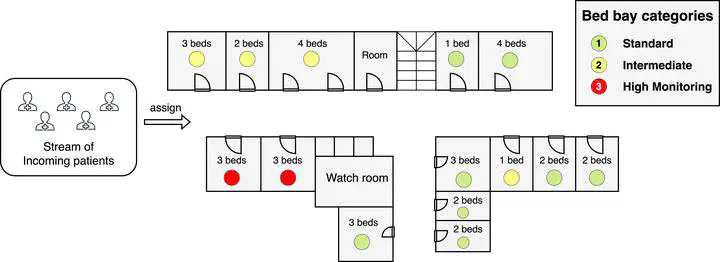
Abstract
Digital twins are emerging as a valuable tool for short-term decision-making as well as for long-term strategic planning across numerous domains, including process industry, energy, space, transport, and healthcare. This paper reports on our ongoing work on designing a digital twin to enhance resource planning, e.g., for the in-patient ward needs in hospitals. By leveraging executable formal models for system exploration, ontologies for knowledge representation and an SMT solver for constraint satisfiability, our approach aims to explore hypothetical “what-if” scenarios to improve strategic planning processes, as well as to solve concrete, short-term decision-making tasks. Our proposed solution uses the executable formal model to turn a stream of arriving patients, that need to be hospitalized, into a stream of optimization problems, e.g., capturing daily inpatient ward needs, that can be solved by SMT techniques. The knowledge base, which formalizes domain knowledge, is used to model the needed configuration in the digital twin, allowing the twin to support both short-term decision-making and long-term strategic planning by generating scenarios spanning average-case as well as worst-case resource needs, depending on the expected treatment of patients, as well as ranging over variations in available resources, e.g., bed distribution in different rooms. We illustrate our digital twin architecture by considering the problem of bed bay allocation in a hospital ward.